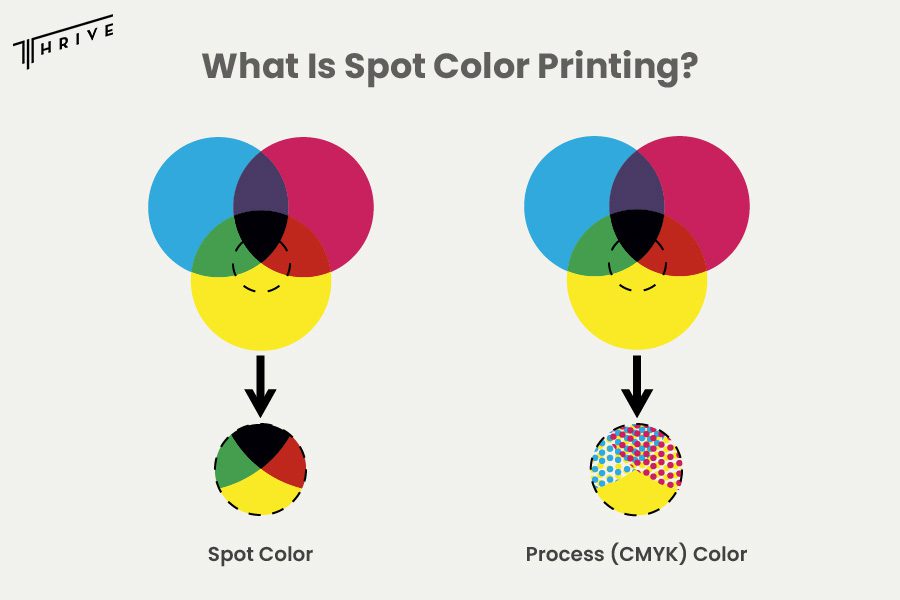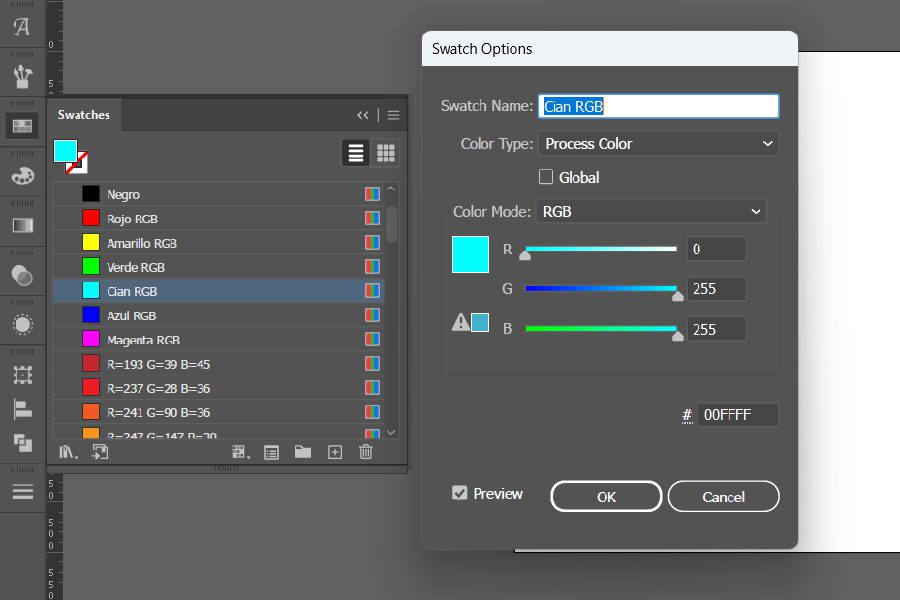
Printing is a widely used practice suitable for both individuals and businesses. Many companies invest in this service as a marketing strategy to increase brand awareness, reach new audiences, and promote their products. With various options available, we’ve noticed that many of our customers are unsure of the best solutions for their needs. That’s why, in this article, we want to elaborate on what is spot color printing and what it’s used for.
With experience dating back to 1990, our team at Thrive Screen Printing is well acquainted with the different printing methods. Thus, we want to elaborate on the spot color printing technique and what it consists of. Having insights into what goes on behind the process will make it easier for our clients to decide if it’s the right option for them.
Furthermore, we want to mention some of the most common uses of this printing technique while also shining a light on its advantages. Continue reading to discover what spot color screen printing entails, its use, the process behind it, and its pros and cons.
Spot Color Definition and Meaning
Spot color, also referred to as solid color, is a term used for specially mixed ink used during the printing process. It also refers to a single solid color that can be generated by pure or mixed ink during a single run print. Furthermore, they’re commonly specified through industry-standard color matching systems, such as the standardized Pantone Matching System (PMS) colors. To ensure consistency across various printing methods and processes, each color has its specific Pantone number.
The main difference between processed color and spot color is that the latter comes pre-mixed instead of mixing colors during the printing process. This leads to consistent and uniform results, regardless of the printer or design. On the other hand, processed colors use the CMYK color model, which consists of four based colors: cyan, magenta, yellow, and black (key). Spot colors are applied individually, while processed colors combine various percentages of CMYK colors.
For those interested in more advanced processes, there is the CMYKOG scheme that also incorporates the colors orange and green. Many prefer this color process because it compensates for the ineffective faint tints caused by CMYK.

What is spot color in printing?
The most common use of spot color in printing is to achieve consistent colors in the printed materials. This is especially important if the printing service has been hired for marketing purposes, such as branding and logos. As we briefly mentioned, spot color printing works specifically with pure or custom-mixed colors. When using spot color printing, each color requires a separate lithographic film which is then transferred to its own screen. Then, the spot color is applied to all the different plates, one at a time.
Since it can be easily applied to various printing techniques, it’s suitable for screen printing and offset lithography.
Another use of the term spot color is to describe colors generated by a non-standard offset ink. This includes custom hand-mixed inks, as well as metallic and fluorescent inks. Since this process results in bold and vibrant colors, many offset printing services charge more for printing such designs.
If you’re looking for an expert team that delivers an exceptional wholesale screen printing service, contact our team at Thrive Screen Printing. As one of the top contract screen printing and finishing companies in the U.S., we can handle and deliver on-time and on-budget high-volume orders.
What is spot color in software use?
Regarding software applications that use spot color, the most common examples are Adobe Illustrator, InDesign, Scribus, and CorelDRAW. So, what is spot color in Illustrator? While there are various methods to incorporate patterns of spot color in prepress artworks, this platform can create spot colors as additional channels.
The colors you see and work with are part of different color models known as RGB, CMYK, or HSB. Each model has a different method of describing and classifying color using numeric values. Furthermore, it’s important to mention that each device interprets the color values based on its color space. That’s why there’s a visual difference between the colors on computer monitors and printers.
To ensure the design turns out as planned when printed, Adobe Illustrator offers a Swatch panel where one can manage and define spot colors. Even though users can create custom colors, there’s also a Pantone color library to ensure cross-device compatibility. Another amazing feature is the Separation Preview, which allows an overview of how the colors will separate when printed.
To ensure accurate color reproduction across different printing processes and devices, there’s a color management setting to calibrate monitors, specify color conversion options, and choose suitable color profiles.

What Is Spot Color Printing Used For?
After explaining what spot color printing is and the process behind it, we also want to elaborate on its different uses. Since this printing technique is popular for its vibrant colors, it’s ideal for printing materials that require a unique finish, such as the following:
- Business cards
- Envelopes and letterheads
- Marketing materials with consistent colors
- Highlighting booklets, brochures, and leaflets
However, since it has a limited color granule, we don’t recommend this method for full-color imagery. Instead, it’s best used to boost the design’s vibrancy by incorporating fluorescent colors and metallic inks.
Pros and Cons of Spot Color Printing
As with any product or service, there are both pros and cons of spot color printing. To ensure we give a clear overview of this printing technique, we’ll elaborate on both separately.
Pros of spot color printing
- Bold and vibrant results
- More accurate colors based on specific Pantone numbers
- Color doesn’t change between printing jobs
- More economical when fewer colors are being used
- Consistent colors across various media suitable for branding opportunities
Cons of spot color printing
- A limited number of colors can be used on the press and printing project
- More expensive compared to other printing methods if more colors are used
- A more complex design process which may take more time to prepare
Conclusion
So, what is spot color printing and its use? After elaborating on the use of spot colors in printing and software, we want to highlight its effectiveness in producing consistent, bold, and vibrant results. Furthermore, since this printing process is suitable for various uses, it can be easily incorporated into marketing strategies.
Lastly, if you’re looking for a professional printing service, don’t forget to check out what our team at Thrive Screen Printing offers! Besides the ability to produce high volumes of designs in exceptional quality, we also take pride in our finishing shelf-ready services. With a variety of printing options available, we’ll find the ideal solution for your business needs and ensure you get your money worthwhile!

Robert Fisher is the founder and CEO of Thrive Screen Printing and brings extensive experience in the screen printing and fulfillment industry.

